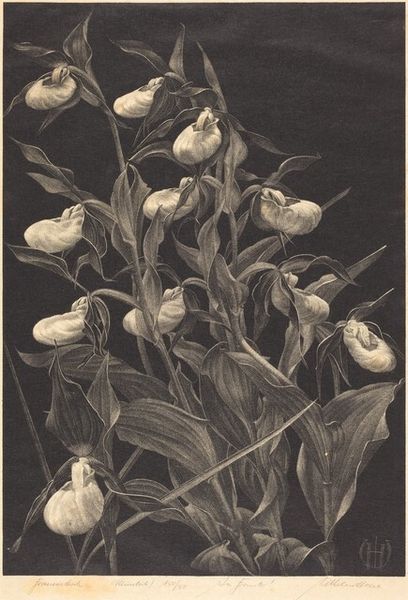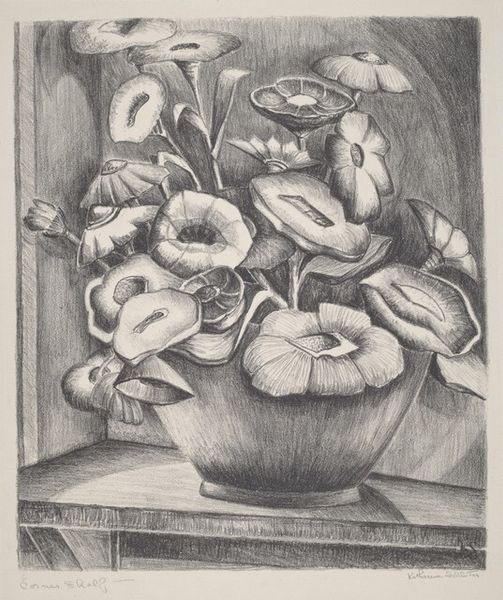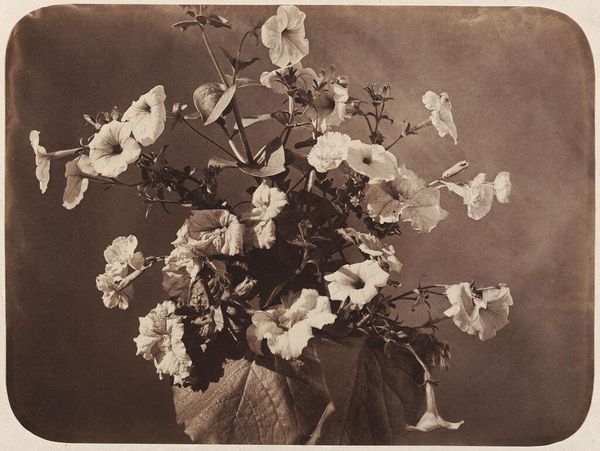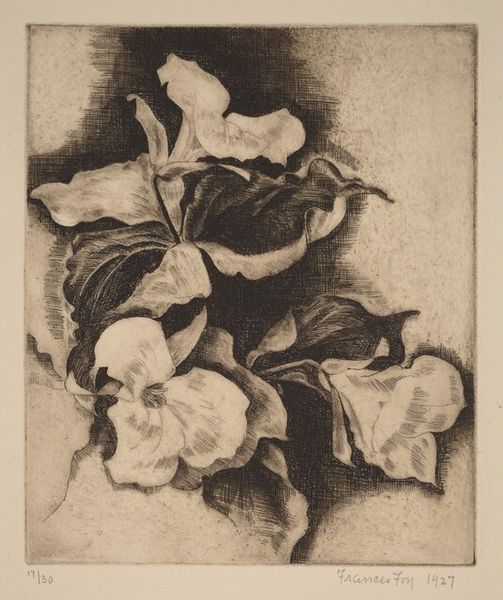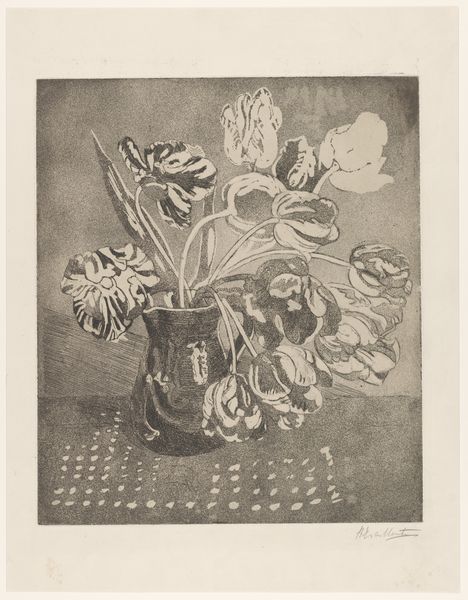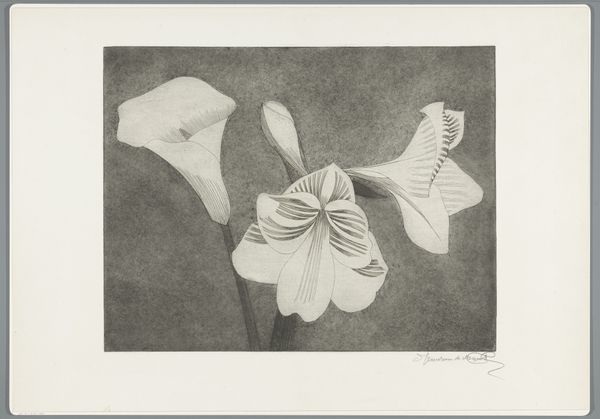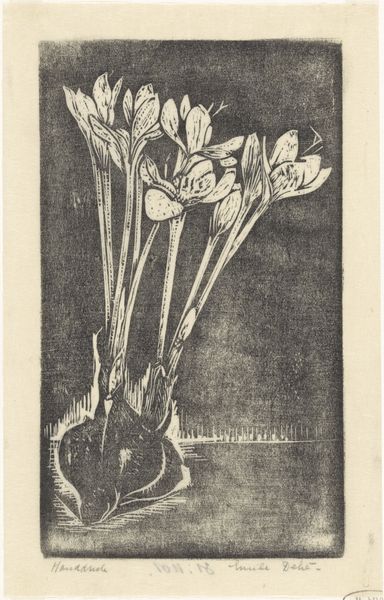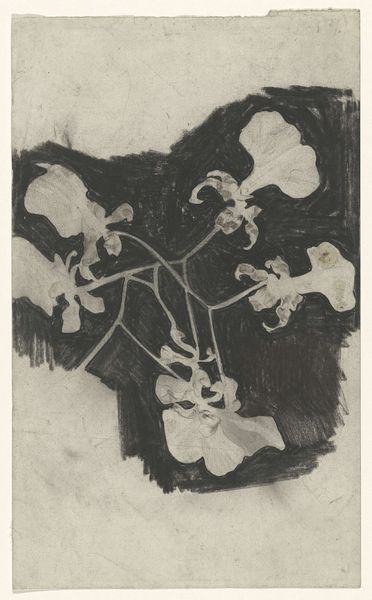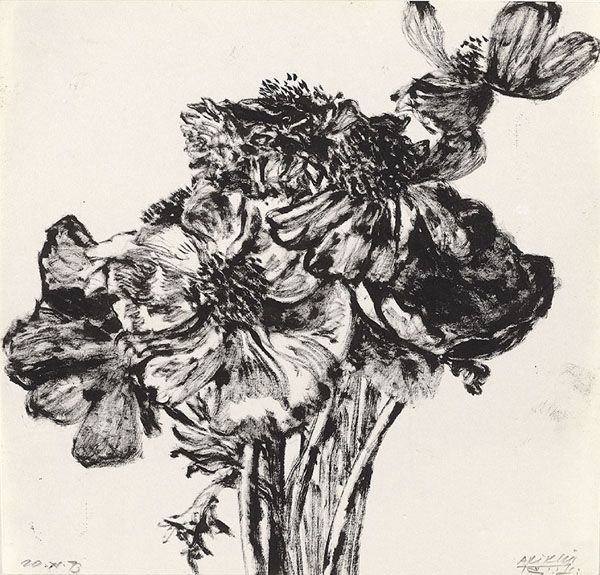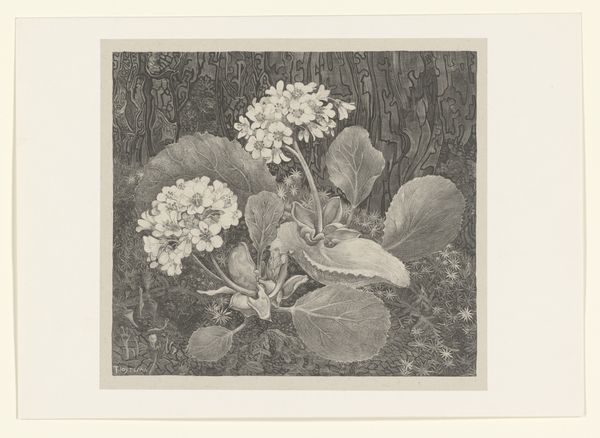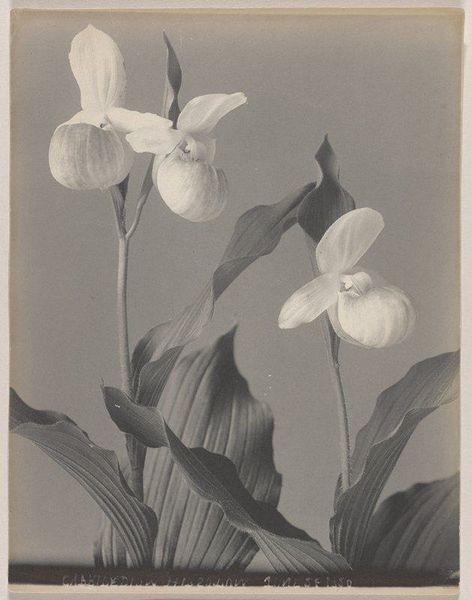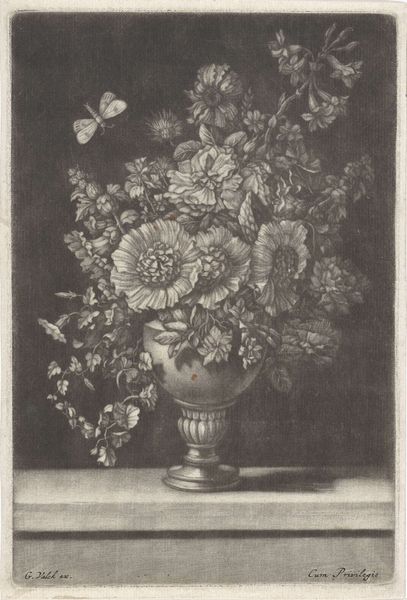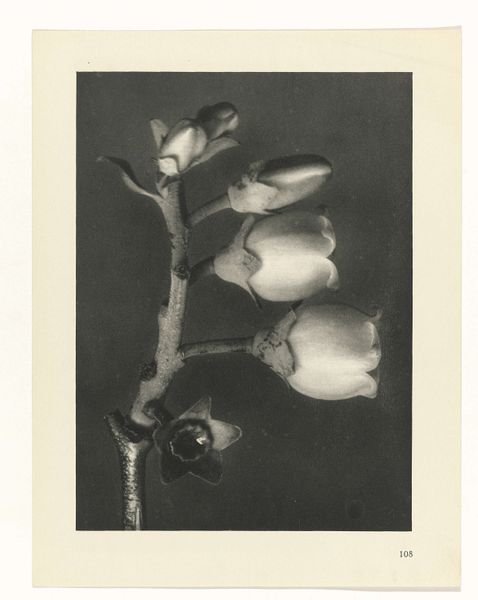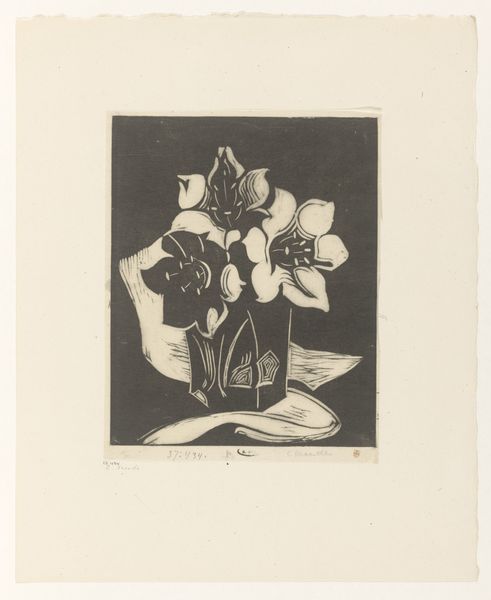
graphic-art, print, etching
#
graphic-art
# print
#
etching
#
figuration
#
line
#
decorative-art
Dimensions: plate: 261 x 250 mm sheet: 336 x 273 mm
Copyright: National Gallery of Art: CC0 1.0
Editor: This is Jeannette Maxfield Lewis's "Callas" from 1959, an etching print. It feels very graphic, stark even. All those carefully placed lines create such a sense of depth, especially with the dark background. What do you see in this piece that I might be missing? Curator: Immediately, the complexity of line becomes apparent. Observe how Lewis uses varied densities and directions of etching lines to sculpt form and light. The lilies themselves, and the vase especially, gain volume from the considered arrangement of marks, achieving both descriptive accuracy and an overall decorative aesthetic. Note the interplay between positive and negative space—the black background pushes the subject forward. Editor: I can see that, the lines around the vase are incredible! Almost chaotic but creating real form. Is that intentional do you think, or is it simply to create form? Curator: One could argue that chaos is intentionally evoked to amplify form, or conversely, form arises naturally out of chaotic linework. Is there a way to truly differentiate when viewing it? Editor: That’s true, it could be both I guess. Thinking about it, the title focuses my attention towards the flowers too; away from background which becomes a frame in turn. It shows the strength of simple design doesn't it. Curator: Precisely. Lewis manipulates these formal elements to evoke, not merely represent. Consider how your own interpretation is guided, challenged, and enriched by attending to this level of structural articulation. A potent piece, isn’t it? Editor: It really is! I never noticed how much detail etching allows; it certainly focuses the mind, thank you!
Comments
No comments
Be the first to comment and join the conversation on the ultimate creative platform.
